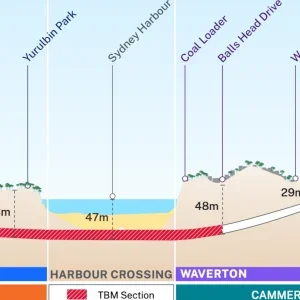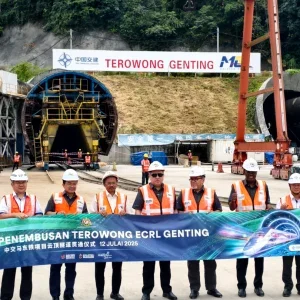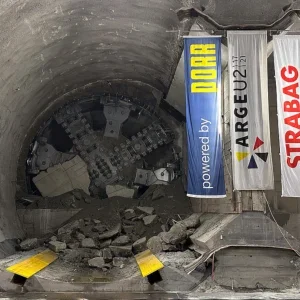The first tunnel breakthrough has been announced on the Panxi Expressway Project in the Sichuan province in south west China that features 26km of tunnels.
UK consultant, Halcrow, is providing “specialist technical advice and assistance with construction supervision” for the 150km long scheme that will connect Xichang with Panzhihua. The southern section follows a route through mountainous terrain and necessitates 14 twin tube tunnels to be driven. Currently, there are 40 separate tunnel drives being excavated due to the twin tube configuration and modes of working with some contracts having both tubes being driven from both ends.
Out of 16 contracts, eight include tunnels. The internal final span of each tube is 10.5m. For all contracts, the excavation method is drill and blast using hand drilling, with rubber tyred loaders and dump trucks being utilised for mucking out the rounds. The rock conditions determine whether advance is by full face or heading, bench and invert with face buttresses maintained at all times.
An array of rock types are represented in the project area, from metamorphic phyllites, schists and gneisses to basalts, mudstones and sandstones. Extensive igneous intrusions of granite and diorite are found in several of the tunnels. Deep weathering of the granites and basalts, together with the presence of soft sedimentary rocks at the surface, has resulted in many landslides and mudflows along the route. The design of the road cuttings and portal slopes has to address this.
Temporary support is by means of rockbolts, dry mix shotcrete and mesh with steel arches or lattice girders and shotcrete as required. Forepoling is carried out to create an umbrella of support ahead of advance in weak ground. The permanent lining is cast concrete, either reinforced or not depending on geology, together with a waterproofing membrane and groundwater drainage system.
The scheme is being constructed by the Sichuan Panxi Expressway Company Ltd as part of the Southern Sichuan Roads Development Project. Completion is planned for 2006.







